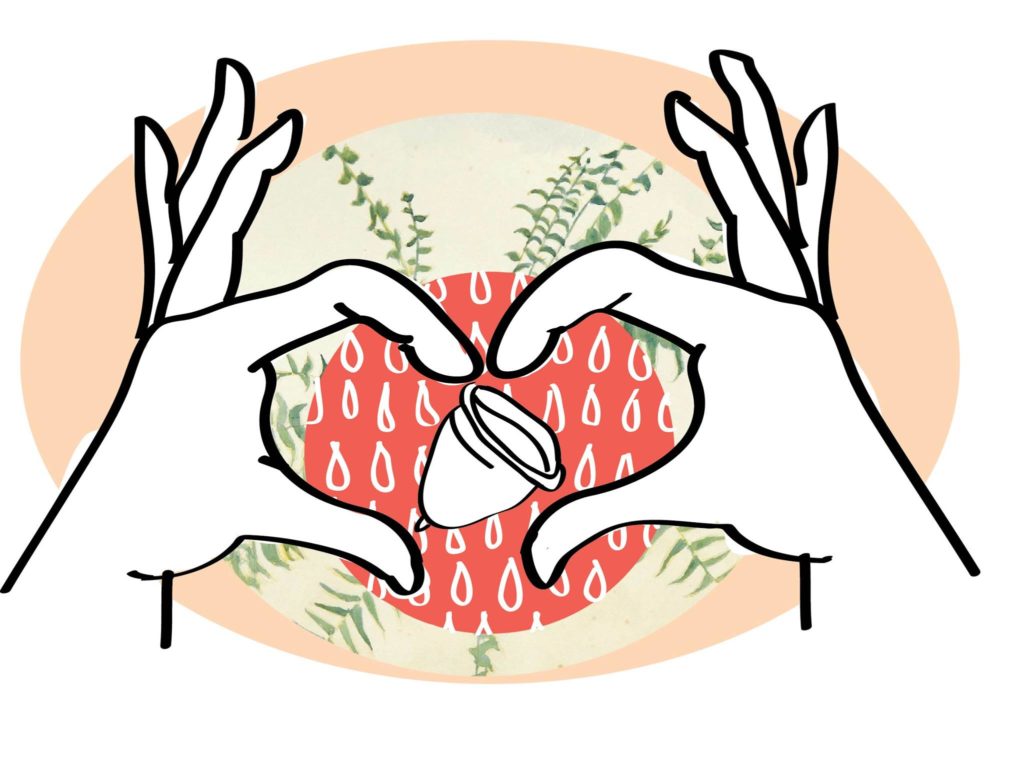Illustration: Chloe Tredrea
By now I’m sure most reading this have heard of the ubiquitous menstrual cup: the bell-shaped period-catching device taking the menstrual world by storm. Extolled in articles across the internet as an environmentally-friendly alternative to pads and tampons, the product is now offered by numerous brands – JuJu, Moon and Diva to name but a few.
When I first heard about them from my environmentally savvy housemate, truthfully – I baulked. It sounded like yet another environmentally-friendly product that I would feel obligated to use, like spiralizers, shower-timers or kale: virtuous but unrealistic products for a type-lazy personality like myself.
Reluctantly, I decided to give it a try, shelling out $55 for a Juju I didn’t expect to like or even use. It arrived in a floral box and vibrant purple drawstring bag: even cups aren’t immune from the ultra-feminine advertising favoured by the feminine hygiene industry. Without wanting to sound overly dramatic or Dr Phil-esque: it was a changing day in my life, and I haven’t so much as looked at a tampon since.
Sure there were some (hic)cups: the tail was too long, as were my fingernails – please don’t repeat my mistakes – but before long I was a menstrual-cup pro. In true Buzzfeed-style, here are my top four reasons for joining the menstrual cup movement:
One. Save the planet, one period at a time
On average, one person will use 11,000 tampons in their lifetime, contributing 125kg of waste to landfill that takes centuries to break down. That doesn’t even include the environmental impact of the manufacturing process, which includes packaging, transportation, and the pesticides used to grow cotton that can pollute water and harm aquatic wildlife. As if women need another reason to feel ashamed of their periods.
Two. $$$
Assuming that one month of sanitary products costs you around $10, a menstrual cup pays for itself after six months and apparently lasts up to 10 years. Even if you choose to replace it annually, that’s still a 50 percent saving. Not to mention the GST on sanitary products adding an extra $1000 to the cost of menstruation over the course of your lifetime. But hey, it’s a ‘luxury’ product – unlike condoms of course.
Three. Health benefits
Tampons are effective, but indiscriminate: they’ll absorb anything and everything to try to keep you free from leakage. Because menstrual cups are designed to catch rather than absorb, you only get rid of the stuff that actually needs to go, leaving you with a happier and healthier vagina. Sweetening the deal is the fact that you can finally rid yourself of TSS associated guilt and anxiety for leaving tampons in all night (don’t judge me, we’ve all done it). TSS isn’t impossible, but is extremely rare with a menstrual cup.
Four. Sheer convenience
It turns out menstrual cups are a lazy person’s dream. You only have to change it two to three times a day, and for most, they are leak-proof all night. With a morning and evening twice-a-day routine, it also rarely means I have to change them in a public bathroom, thereby avoiding the ever-overstuffed sanitary bin nightmare. Even if you replace it once a year, you save yourself 11 trips to the supermarket (or 12 if you order online) and innumerable panicked ‘omg where the f*ck did I put my spare tampon’ moments.
So what are you waiting for? Join the menstrual cup movement and start reaping the environmental (and personal) rewards.
We acknowledge the Ngunnawal and Ngambri people, who are the Traditional Custodians of the land on which Woroni, Woroni Radio and Woroni TV are created, edited, published, printed and distributed. We pay our respects to Elders past and present. We acknowledge that the name Woroni was taken from the Wadi Wadi Nation without permission, and we are striving to do better for future reconciliation.
